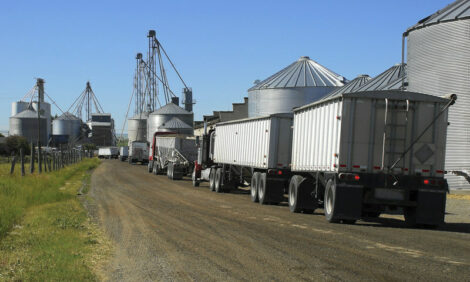



Market Preview: Exports Can’t Compete with 2008
US - Weekly US Market Preview provided by Steve R. Meyer, Ph.D., Paragon Economics, Inc.July pork export data, released on Thursday by USDA’s Foreign Agricultural Service (product weight and value) and on Friday by USDA’s Economic Research Service (carcass weight equivalent), indicate that US pork exports for 2009 still suffer from the "older, smarter brother" syndrome with respect to 2008: They just are never going to measure up!
To illustrate that point, consider total pork exports for July in carcass weight equivalent – 355.6236 million pounds. That number is 13.2 per cent below last July’s 409.5 million pounds, but is 61.6 per cent higher than July 2007 exports. And the July 2007 total of 220 million pounds was just 5 million pounds below the largest July total in history. And I repeat: This year blew July 2007 away by over 60 per cent. It is only the comparison with the remarkable totals of 2008 that look bad. It’s hard to measure up to a smarter, older brother.
Figure 1 demonstrates the exceptional performance of US pork exports relative to any year other than 2008. As can be seen, the only months so far in 2009 that have been below the 2004-07 trend for pork exports are May and June. July was above that trend line by over 30 million pounds and was very near the polynomial trend line that best fits all monthly data since 1990. If not for the export spike of April –July 2008, we would be dancing in the streets over July exports!

My point is this: In spite of H1N1, a stronger dollar and a worldwide recession, US pork exports have performed well. That is a demonstration of the advantageous competitive position of the US pork industry. Though our business must get smaller to realize prices that exceed today’s new production cost realities, we will still be competitive in world pork markets and there will still be a viable US pork industry!
US exports in product weight terms, amounted to 267 million pounds in July, 12.5 per cent lower than last year. The value of July shipments was down only 17.6 per cent, reflecting lower US wholesale prices. Year-to-date, US pork exports are down 16.9 per cent in product weight and 12.9 per cent in value. Those numbers are keeping us on a pace to match the 2004-2007 trend levels but will be roughly 15 per cent below 2008 levels at year’s end.
Figure 2 shows year-to-date pork export quantities for the world and for key US pork markets. Shipments to Japan are down slightly (2.6 per cent) through July. In spite of a difficult May and June, exports to Mexico are still 33 per cent larger than in 2008 and on pace to set another record this year. Most other major markets are down for the year with China-Hong Kong, of course, showing the larges (69.9 per cent) decline.

Figure 3 shows year-to-date pork variety meat exports which have grown as consumers have looked for greater value. Total variety meat shipments are up 21.3 per cent in volume and 17.9 per cent in value through July. Mexico, our largest market for pork variety meats, has shown remarkable growth at +21.3 per cent in volume and 47.3 per cent in value. Even shipments to China-Hong Kong have grown this year and shipments of variety meats to Japan are over 80 per cent larger, making that country our third-largest variety meat market in 2009.

Russia and Korea, which have historically been our second- and third-largest variety meat markets are, no surprise, lagging the pace of 2008 sharply. Shipments to those two countries are down 48.1 and 48.9 per cent, respectively, while the values of those shipments are down 46 and 43.5 per cent, respectively.
Note that both the week-to-week and week-vs.-last year comparisons in this week’s Production and Price Summaries are odd due to Labor Day, which fell one week later this year. Federally inspected slaughter last week was almost identical to Labor Day week of 2008 but slaughter weights continue to drive pork production higher.
The industry continues to ask consumers to buy more pork than was expected, so lower prices should not come as a shock. The size of that decline, though, is still a surprise and must be attributed to softer demand, both here and abroad. Remember, demand is quantity and price. Consumers in the United States and other countries are taking the quantity but they are only doing so at lower prices.










